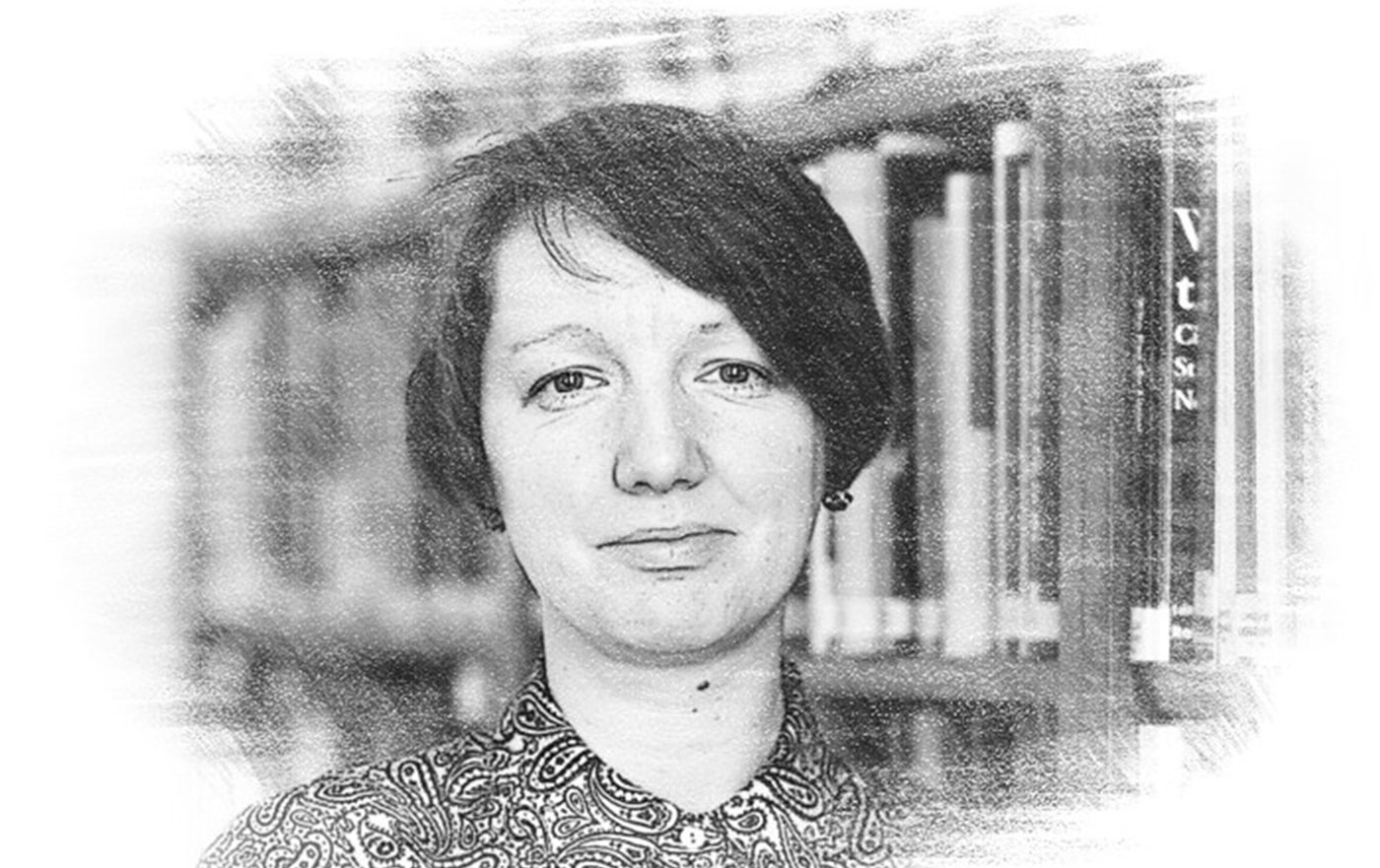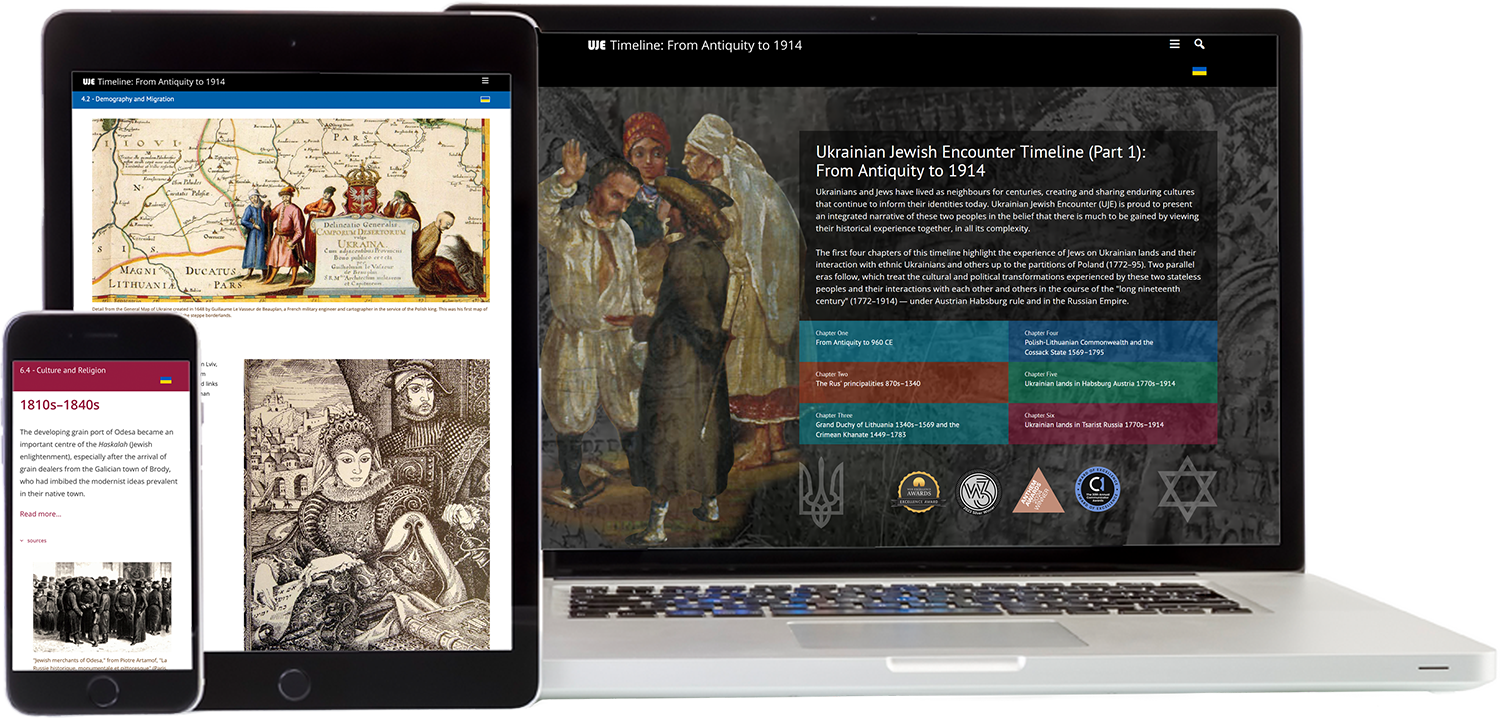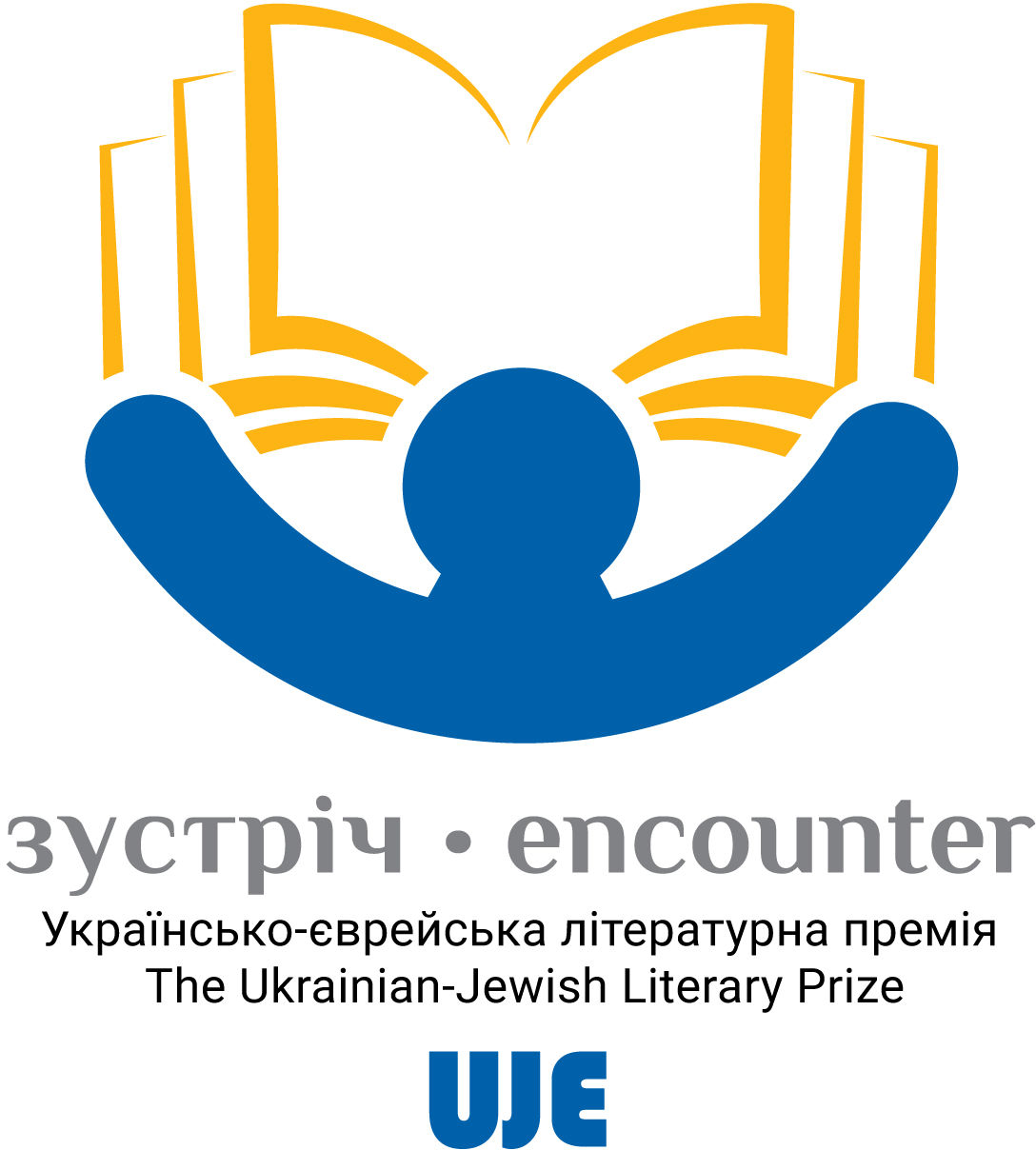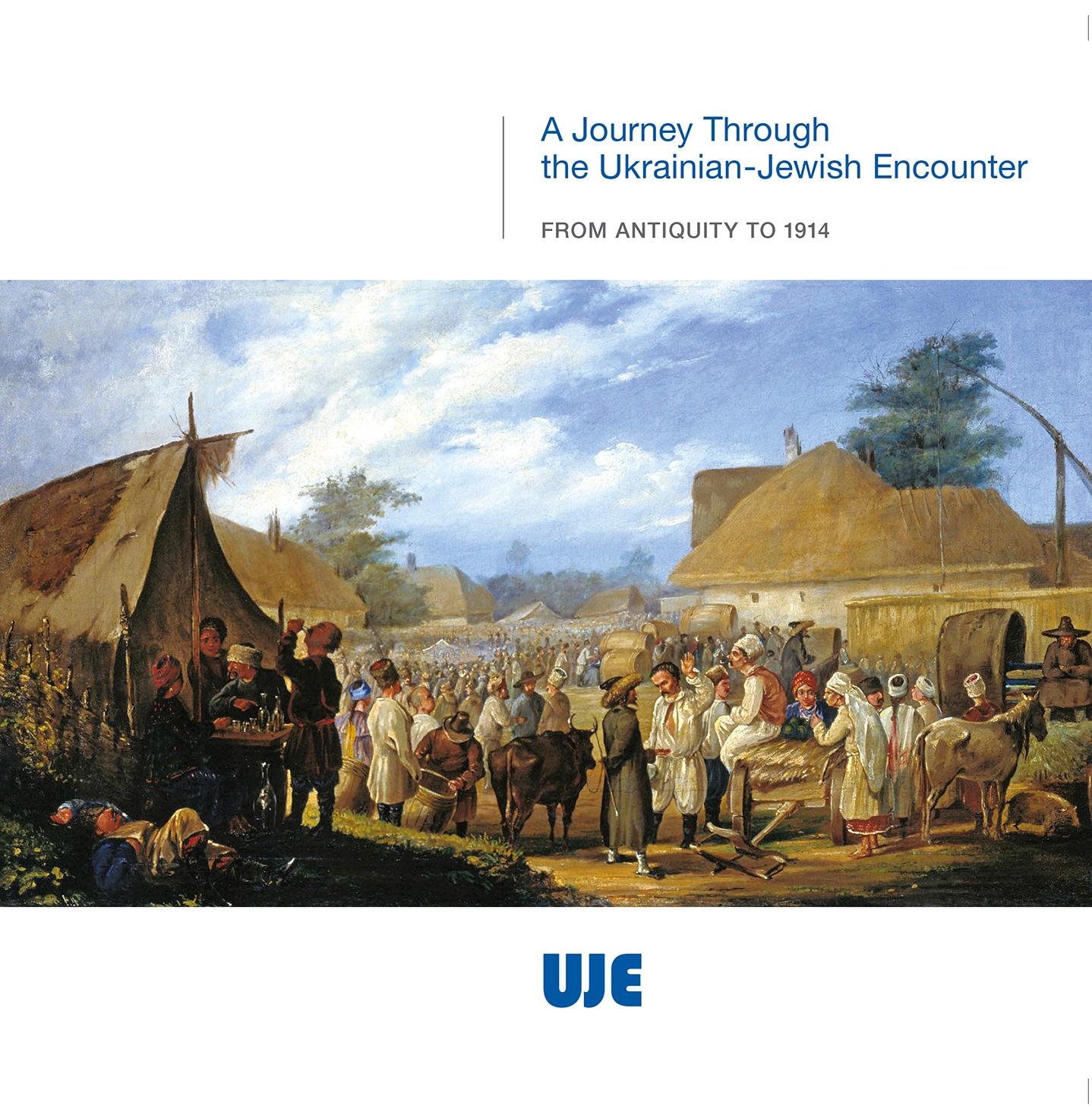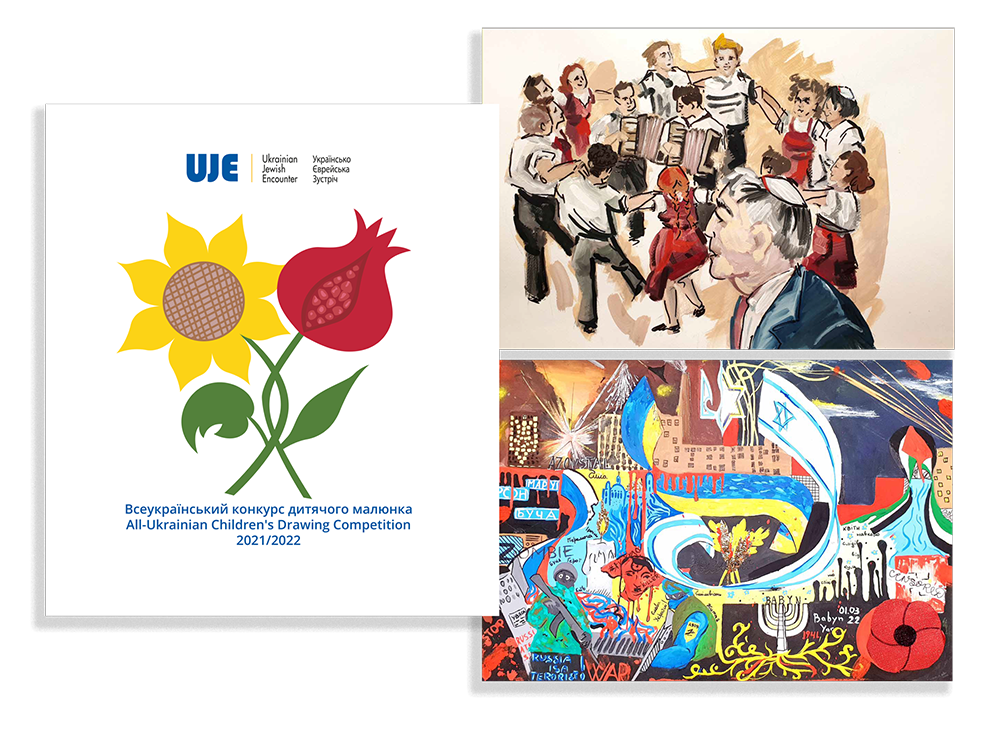Labyrinths of nostalgic tourism
Vladyslava Moskalets
A Polish translation of Ghosts of Home: The Afterlife of Czernowitz in Jewish Memory, by Marianne Hirsch, a specialist on Holocaust memory, and Leo Spitzer, was published in Poland in 2023. This book is essential to me as a researcher of history and memory and the organizer of "nostalgic tourism," or heritage tourism, a phenomenon that deserves to be understood and analyzed. I read the book around the time that my husband, the historian Tomasz Jankowski, gave a lecture at the Lviv Center for Urban History about Jews returning to Poland and Galicia, Ukraine. Entitled "In Search of a Native Shtetl: Looking Back in Time Three Generations Later," the lecture focused on the emotional experiences of the descendants of American, Canadian, and Israeli Jews in Ukrainian towns and villages. In this essay, I would like to reflect on these two optics: those who are returning and those who accompany them. I believe that now is a good time to gain an understanding of what "nostalgic tourism" meant for Ukraine in the early 1990s, given that this phenomenon abruptly ceased. After 2020, the influx of tourists nearly disappeared because of the pandemic, after which it did not have a chance to resume because of Russia's full-scale invasion. The last prewar witnesses, both visitors and local residents, are dying, and if tourism revives, it will look completely dissimilar and meet emotional needs in a different way.
Hirsch's book is devoted to the Czernowitzers, the German-speaking Jews of Chernivtsi, who were shaped by the Habsburg Empire and whose culture survived the period of Romanianization, the Holocaust, and the postwar era. Hirsch herself is the daughter of Chernivtsi Jews who survived the Holocaust. She was born in Romania in 1949 and later immigrated to the U.S., where she built an academic career. She introduced the term postmemory (1992) to refer to events and memories that are not experienced personally but are known from the accounts of parents and reflected in their descendants. In her book, Hirsch discusses the practical dimension of this phenomenon and analyzes several trips to Chernivtsi she undertook in the early 1990s with and without her parents. In terms of genre, the book is a report reminiscent of texts about "trips in search of roots." The book reveals the scholar's methodology, distinguished by the thorough research and description of the historical context of the city and region of Chernivtsi under Habsburg rule, interwar Romania, the Second World War and the Holocaust, and the Soviet era. Whereas the Habsburg period is the main stage in the formation of the Czernowitzers, the Romanian period, known for its unification drive and discrimination, and the Soviet period are perceived first and foremost as violence and challenge. Yet, despite all the trials and tribulations, the German-speaking culture of Chernivtsi Jews proved surprisingly strong, and Hirsch, who grew up in Romania among Jews who had left Chernivtsi, felt connected to them.
The author combines these accounts with self-reflection: what she feels when looking at street photographs of Chernivtsi in the 1930s, meeting a female relative who stayed back, and seeing the house where her parents had lived, now occupied by strangers. She gradually becomes acquainted with other natives of Chernivtsi and travels there with a group. Hirsch tries to discern and understand the different layers of the city — Habsburg, Romanian, Soviet, and Ukrainian. One of the key moments is the Holocaust: the occupation and the ghettos and camps in Transnistria. The author traveled to small Transnistrian towns, including Vapniarka, the site of a concentration camp, whose buildings have been preserved, and even managed to enter them, even though they were located on the premises of an army unit in the 1990s. Unlike the buildings, the memory of the Holocaust was not preserved, and none of the local residents knew about the concentration camp.
All these trips take place, especially initially, against the gloomy backdrop of post-Soviet Ukraine undergoing modernization. Although contact with Ukraine and Ukrainians is not the main focus of the book, it is still constantly present, thanks to interpreters and tour guides; forthright or indifferent mayors of the small towns to which visitors come; university professors and female archivists in Chernivtsi; and, finally, to cooperation in the matter of museum exhibitions. During Hirsch's first trip with her parents, who remembered the pre-war period, it becomes clear that they have come to Chernivtsi but have brought with them the old city of Czernowitz. Thus, its German streets and elegant restaurants exist only in their memories and in photographs, while Sovietized Chernivtsi looks strange and unfamiliar. They need tour guides, not to recount the city's history, but to help them get their bearings in this alien place.
On subsequent visits, Ukraine is visibly changed. Neglected buildings are renovated; empty shops now house new restaurants and cafés; convenient hotels have appeared, and there is interest in the past. However, merging Czernowitz and Chernivtsi into a single city is still difficult because various groups of former and current residents or descendants remember and imagine them so differently. One example is the story about creating a Jewish museum in Chernivtsi and how the conceptions of the local museum founders and a Facebook group of Chernivtsi natives failed to harmonize. The latter enthusiastically proposed a list of topics for inclusion in the exposition, but the Ukrainian vision is triumphing. Predictably, the museum's Ukrainian creators point to society's "unpreparedness" to learn more about the Holocaust, and they reject many proposals suggested by the descendants of Chernivtsi Jews, thereby transforming the exhibition into a universal narrative devoid of local features.
Although the author tries to offer a sensitive account of her Ukrainian experiences and values the assistance of locals and contacts with them, she cannot avoid sounding superficial from time to time. For example, on one of her first visits, she goes searching for family documents at the local archive, casting a skeptical eye on the dusty premises and the storage of documents without the benefit of air conditioning. Later, she privately hired a local female archivist, who found what she needed and even removed the documents illegally from the archive for recopying because there was no photocopier in the archive. For these services, Hirsch pays her 40 dollars (noting that this sum is worth a lot in the time of financial crisis) and offers a few more should more family documents surface (noting that "they have not been found to this day"). It is disconcerting to read about this episode. On the one hand, it underlines the difficult financial situation and the "gray" economy that existed in Ukraine in the 1990s. On the other, it reveals how this visitor from the United States takes advantage of the situation by failing to remunerate the archivist properly, offering her a few dollars in the form of a bribe. Although such interactions, as well as outright bribery, were and, perhaps, still are the realities foreigners encounter in Ukrainian institutions, the ease with which they accept this is upsetting and forces one to reflect on the unequal status of Ukrainian helpers.
The trips that descendants of Jews take to Ukraine or Poland, especially short ones, may be not so much journeys of discovery as confirmation of one viewpoint or another. Hirsch, who embarks on a group excursion to Chernivtsi and Transnistria, becomes aware of the phenomenon with which tour guides are familiar: the descendants' views of the places they come from, which are determined by generation and country of origin. Thus, the Ukrainian reality can be very different and seem either hostile or friendly. In his lecture, Dr. Jankowski offers a detailed explanation of the vital role played by local tour guides, fixers, and interpreters in elucidating the reality in which visitors seek their lost past. This is not simply interpreting from one language to another, but often from one worldview to another. At the same time, a local person can find the appropriate words to pose that precise question and grasp the origin of the innuendos or silence.
Marianne Hirsch and Leo Spitzer wrote their book in 2010 without apparently focusing on a Ukrainian readership. Symptomatically, Ukrainian publishers have not yet shown any interest in the publication, and it appeared in Poland not so long ago. However, after 30 years of independence, Ukrainian tour guides, interpreters, and other witnesses to "discovering" Ukraine have accumulated their own observations, and they, too, have something to say.
Originally appeared in Ukrainian @Ukraina Moderna
This article was published as part of a project supported by the Canadian non-profit charitable organization Ukrainian Jewish Encounter.
Translated from the Ukrainian by Marta D. Olynyk







